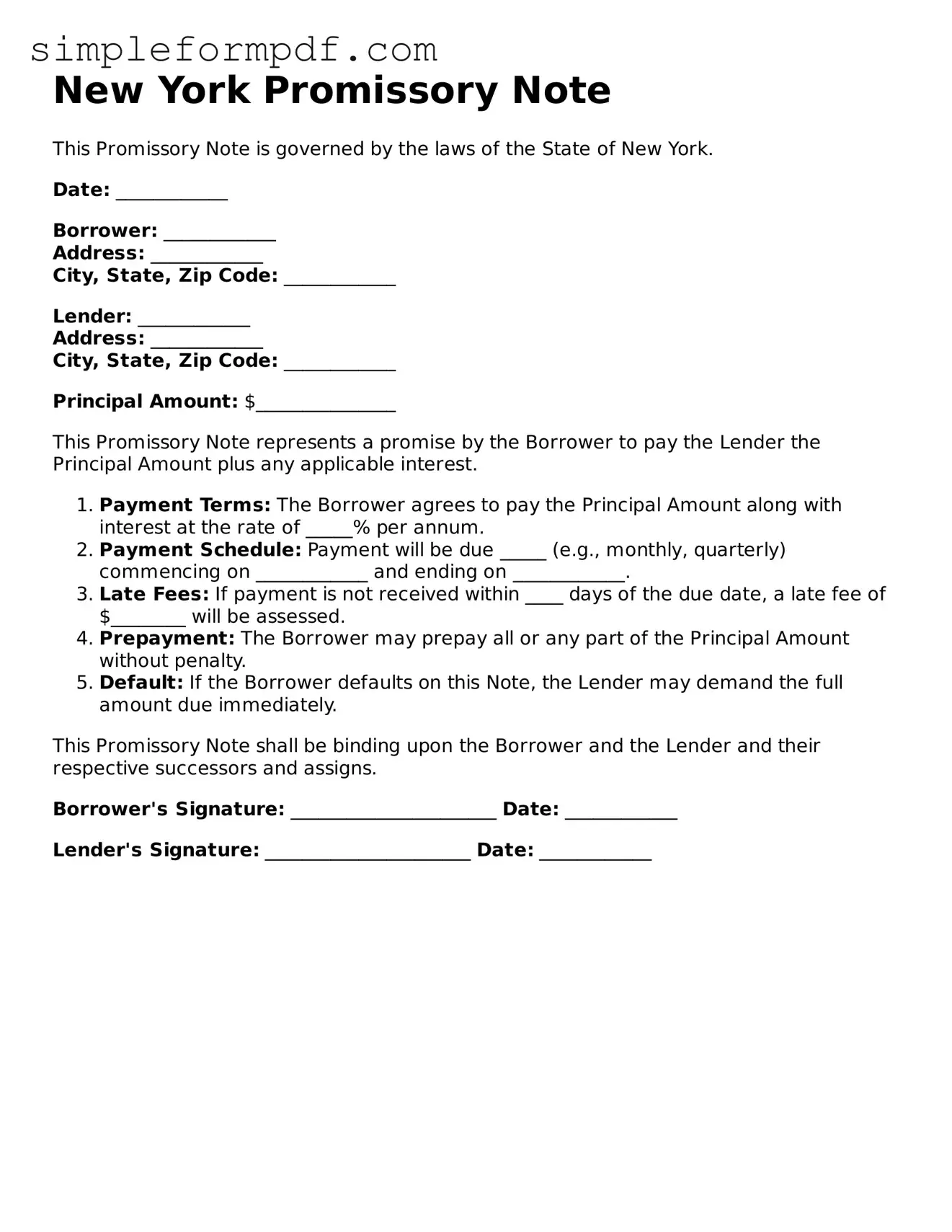New York Promissory Note
This Promissory Note is governed by the laws of the State of New York.
Date: ____________
Borrower: ____________
Address: ____________
City, State, Zip Code: ____________
Lender: ____________
Address: ____________
City, State, Zip Code: ____________
Principal Amount: $_______________
This Promissory Note represents a promise by the Borrower to pay the Lender the Principal Amount plus any applicable interest.
- Payment Terms: The Borrower agrees to pay the Principal Amount along with interest at the rate of _____% per annum.
- Payment Schedule: Payment will be due _____ (e.g., monthly, quarterly) commencing on ____________ and ending on ____________.
- Late Fees: If payment is not received within ____ days of the due date, a late fee of $________ will be assessed.
- Prepayment: The Borrower may prepay all or any part of the Principal Amount without penalty.
- Default: If the Borrower defaults on this Note, the Lender may demand the full amount due immediately.
This Promissory Note shall be binding upon the Borrower and the Lender and their respective successors and assigns.
Borrower's Signature: ______________________ Date: ____________
Lender's Signature: ______________________ Date: ____________
